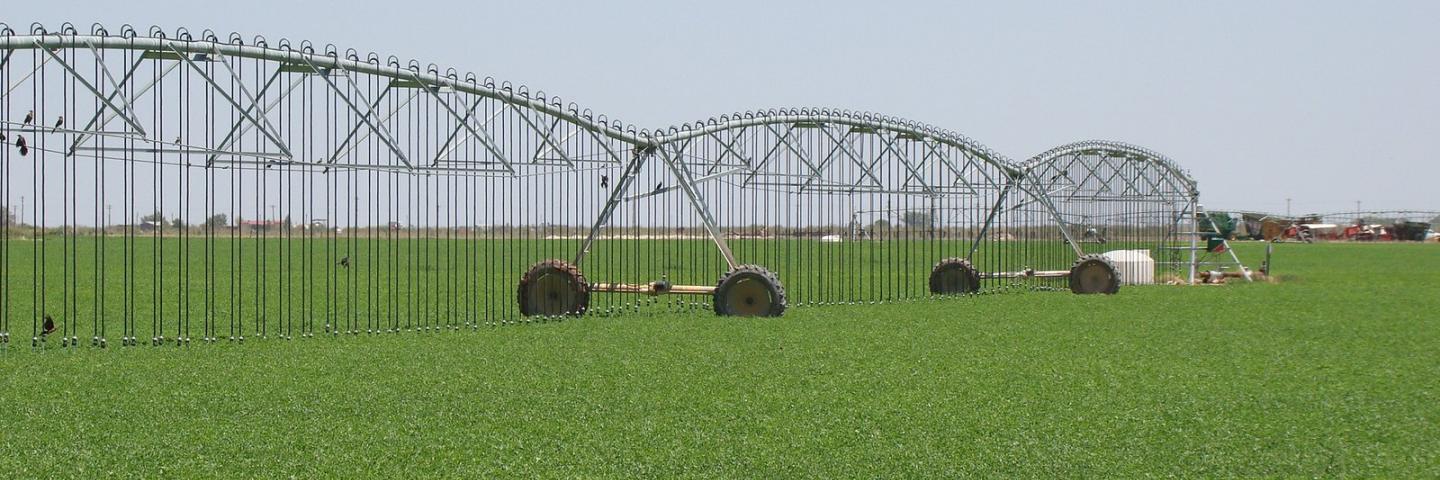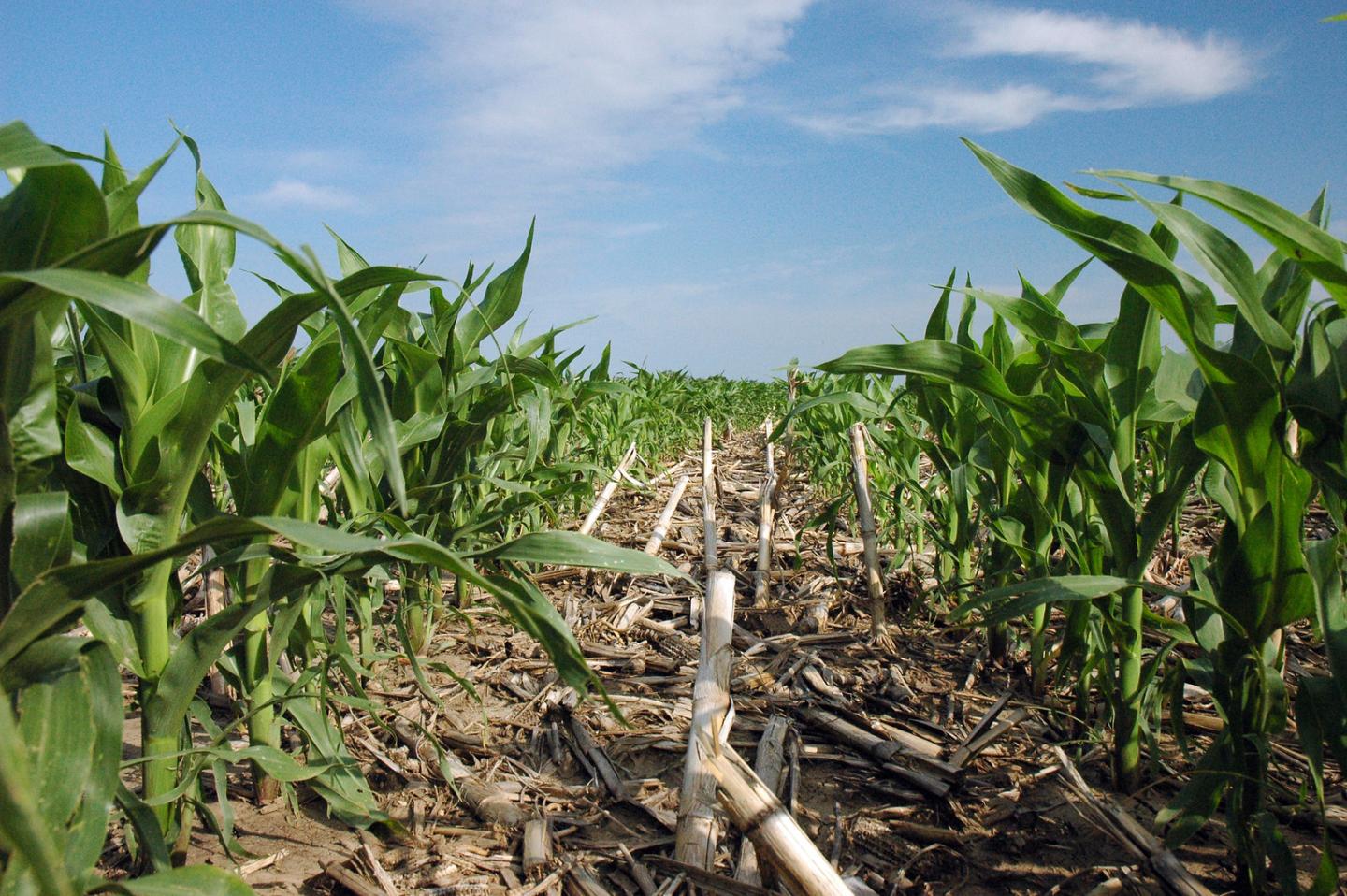
EQIP provides financial and technical assistance to agricultural producers to address natural resource concerns and deliver environmental benefits such as improved water and air quality, increased soil health, improved/created wildlife habitat and mitigation against increasing weather volatility.
How it Works
This voluntary conservation programs helps producers make conservation work for them. Together, NRCS and producers invest in solutions that conserve natural resources for the future while also improving agricultural operations.
NRCS provides agricultural producers with financial resources and one-on-one help to plan and implement improvements, or what NRCS calls conservation practices. Using these practices can lead to cleaner water and air, healthier soil and better wildlife habitat, all while improving agricultural operations.
Through EQIP, you can voluntarily implement conservation practices, and NRCS co-invests in these practices with you.
Benefits
EQIP is NRCS’s most popular and most frequently utilized conservation program. Thousands of producers voluntarily enroll in the program every year to address priority resource concern benefiting both their agricultural operation and environmental quality.
Some of these benefits include:
- Reduction of contamination from agricultural sources, such as animal feeding operations.
- Efficient utilization of nutrients, reducing input costs and reduction in nonpoint source pollution.
- Increased soil health to help mitigate against increasing weather volatility and improved drought resiliency.

Historically Underserved Communities
Historically underserved participants are eligible for advance payments to help offset costs related to purchasing materials or contracting through EQIP.
EQIP Initiatives
Targeted EQIP financial assistance is available through general EQIP, and several other initiatives. These initiatives address priority natural resource concerns on the most vulnerable lands, target conservation assistance in high priority watersheds, or help stimulate the development and adoption of innovation and technology.
- High Tunnel Initiative
- Organic Initiative
- Air Quality Initiative
- Landscape Initiatives
- On-Farm Energy Initiatives
- Conservation Innovation Grants
How to Apply
EQIP applications are accepted on a continuous basis, however, NRCS establishes application "cut-off" or submission deadline dates for evaluation, ranking and approval of eligible applications.
EQIP is open to all eligible agricultural producers and submitted applications may be considered or evaluated in multiple funding pool opportunities.
EQIP Eligibility
Agricultural producers and owners of non-industrial private forestland and Tribes are eligible to apply for EQIP. Eligible land includes cropland, rangeland, pastureland, non-industrial private forestland and other farm or ranch lands.
Applicants are responsible for completing and filing all application and eligibility paperwork as required. If funded, participants are required to sign a contract and agree to implement the planned conservation practices to NRCS standards and specifications as scheduled.
Applicants must:
- Control or own eligible land
- Comply with adjusted gross income limitation (AGI) provisions
- Be in compliance with the highly erodible land and wetland conservation requirements
- Develop an NRCS EQIP plan of operations or conservation plan

Common Conservation Practices
NRCS' conservation practices help people reduce soil erosion, enhance water supplies, improve water quality, increase wildlife habitat, and reduce damages caused by floods and other natural disasters.
How are Projects Ranked?
Input from Outside Groups, Agencies, and Citizens: The list of eligible practices in Nebraska, payment rates and limits, eligible resource concerns, and state scoring criteria are developed based on input and recommendations from the State Technical Committee (STC). The STC is made up of representatives from various agribusinesses, producer groups, conservation organizations, and federal, state, and tribal government agency representatives.
The Local Work Group process and scoring criteria, are based on input from the counties in the Local Work Groups (LWG).
The priorities set at the state and county level are those that the STC and LWG respectively determined were of the greatest need and would have the greatest positive environmental impact. The scoring process at both the state and local level was developed in order to select those projects that would provide the greatest environmental benefit, and therefore provide the greatest public good.
NRCS funds Environmental Quality Incentives Program applications that do the most to improve the environment. Funding selections also consider the land use and the location of the applicants’ property. A ranking system gives points to each application. NRCS assigns points by looking at how much the land treatments in the application will improve natural resources. A local work group made up of conservationists, agricultural producers, and others working with natural resources in the community choose which natural resource problems are most important at the local level. The local points make up 25% of the total points used for ranking. The NRCS State Conservationist must approve local work group ranking points, the conservation practices selected to improve the natural resource problems, and the payment rates for conservation practices. The national and State NRCS offices chose which natural resource problems are the most important for the other 75 points used for ranking.
Additional Information
Apply for Environmental Quality Incentives Program (EQIP)
The Environmental Quality Incentives Program (EQIP) provides financial and technical assistance to agricultural producers and non-industrial forest managers.
Learn MoreFarm Bill
The 2018 Farm Bill was enacted on December 20, 2018. The Farm Bill continues its strong support for conservation efforts of America’s farmers and ranchers through reauthorization and expanded flexibility of NRCS conservation programs.
Learn MoreReady to get started?
Contact your local service center to start your application.
How to Get Assistance
Do you farm or ranch and want to make improvements to the land that you own or lease?
Natural Resources Conservation Service offers technical and financial assistance to help farmers, ranchers and forest landowners.

To get started with NRCS, we recommend you stop by your local NRCS field office. We’ll discuss your vision for your land.
NRCS provides landowners with free technical assistance, or advice, for their land. Common technical assistance includes: resource assessment, practice design and resource monitoring. Your conservation planner will help you determine if financial assistance is right for you.
We’ll walk you through the application process. To get started on applying for financial assistance, we’ll work with you:
- To fill out an AD 1026, which ensures a conservation plan is in place before lands with highly erodible soils are farmed. It also ensures that identified wetland areas are protected.
- To meet other eligibility certifications.
Once complete, we’ll work with you on the application, or CPA 1200.
Applications for most programs are accepted on a continuous basis, but they’re considered for funding in different ranking periods. Be sure to ask your local NRCS district conservationist about the deadline for the ranking period to ensure you turn in your application in time.
As part of the application process, we’ll check to see if you are eligible. To do this, you’ll need to bring:
- An official tax ID (Social Security number or an employer ID)
- A property deed or lease agreement to show you have control of the property; and
- A farm number.
If you don’t have a farm number, you can get one from USDA’s Farm Service Agency. Typically, the local FSA office is located in the same building as the local NRCS office. You only need a farm number if you’re interested in financial assistance.
NRCS will take a look at the applications and rank them according to local resource concerns, the amount of conservation benefits the work will provide and the needs of applicants. View Application Ranking Dates by State.
If you’re selected, you can choose whether to sign the contract for the work to be done.
Once you sign the contract, you’ll be provided standards and specifications for completing the practice or practices, and then you will have a specified amount of time to implement. Once the work is implemented and inspected, you’ll be paid the rate of compensation for the work if it meets NRCS standards and specifications.

